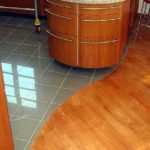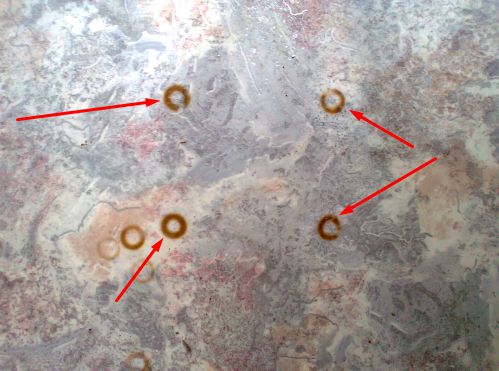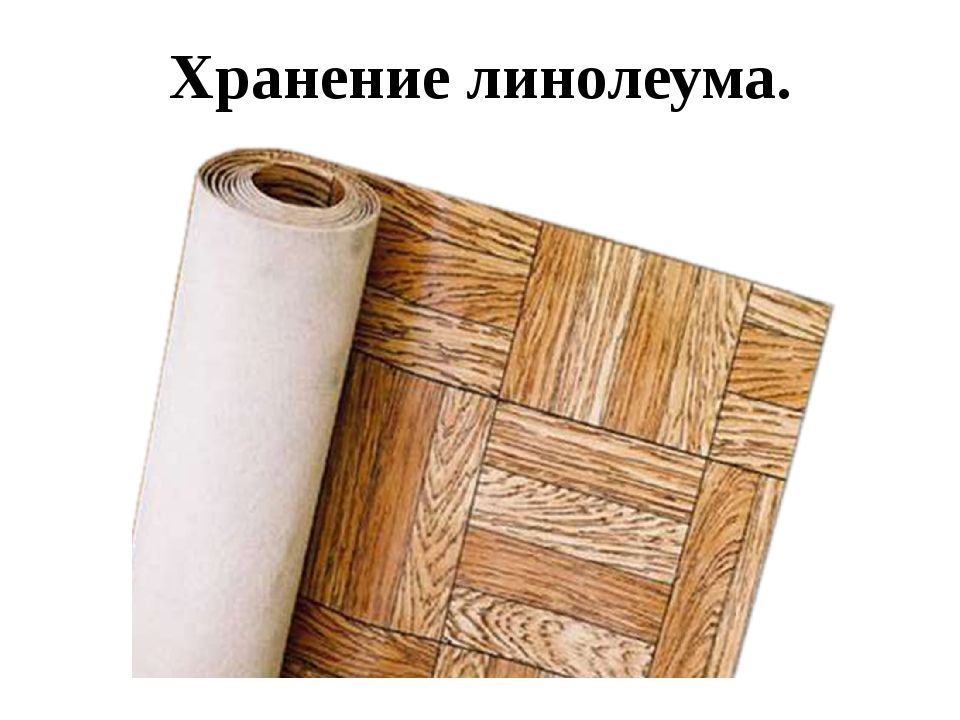How to glue linoleum to a concrete floor
Concrete floors differ in the ratio of sand, gravel or other fillers. But for those who decide to hide an unsightly rough draft, this does not matter at all, because any concrete is capable of absorbing and retaining the components of the materials adjacent to it. And this is good for those who intend to hide it under a decorative layer once and “for life.” However, linoleum, to the disappointment of dreamers, tends to wear out. Therefore, it needs to be changed occasionally. And chewing off the old coating millimeter by millimeter is not exactly an activity that you will want to do in 15-20 years.
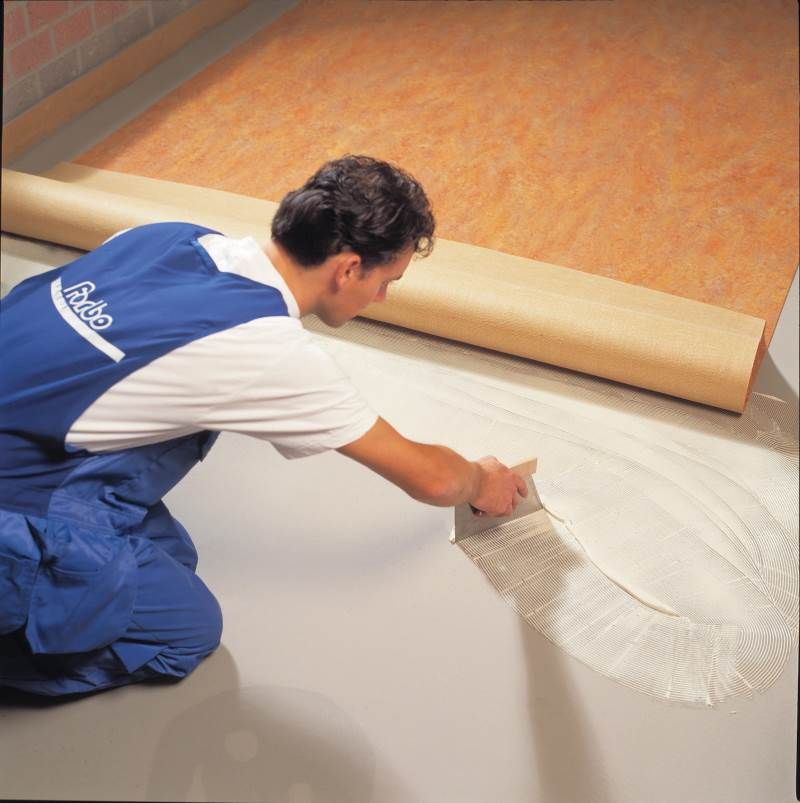
The content of the article
What, what and why
Manufacturers have developed a large number of adhesives. They reliably hold the covering sheet in place during operation, but make it easy to “unhook” it from the concrete in case of replacement. Moreover, the compositions are developed taking into account the characteristics of decorative floor coverings and do not wash out modifiers from them. And in order to stimulate overly economical customers, manufacturers insist on mandatory gluing of linoleum to the floor - otherwise they simply do not provide a guarantee. After all, a securely fixed coating lasts 40-60% longer than that fixed with skirting boards.
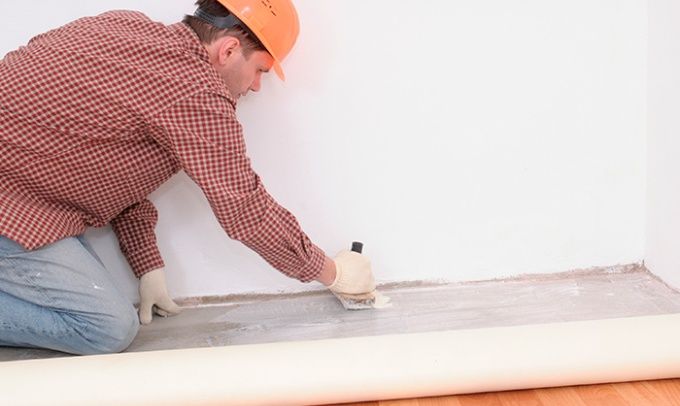
The method of fixing decorative coverings with strips is called dry. It is applicable only when using rolled linoleum, only in rooms up to 20 m2 and exclusively with low traffic.For example: you can lay it like this in a closet or bedroom, but not in a living room or hallway.
There are three ways to attach the covering to the floor:
- using glue;
- using mastic;
- with double-sided construction tape.
Glue
This substance is quite elastic and holds the surfaces to be joined well. Depending on the conditions, various types of linoleum are used when installing linoleum.
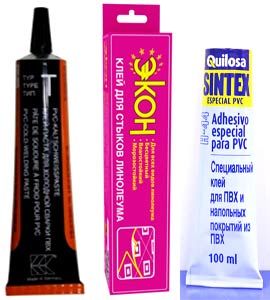
Water soluble - made on the basis of acrylic or polyvinyl acetate. It is used in residential and heated premises. Safe for human health - even use in children's rooms is allowed. Acrylic compositions are divided into:
- acrylate - for coating on a synthetic or jute base;
- humilax - for marmoleum (natural linoleum);
- bustilate - for the insulated version.
Reactionary — toxicity combined with a pungent odor make this glue unsuitable for use in residential areas. It is not afraid of temperature changes and reliably holds the surfaces to be joined. One of its types is cold welding, which comes in two types:
- A - for new linoleum;
- C - for used.
When using any adhesive, it is recommended to first lay a waterproofing layer of the coating.
Mastic

This group of compounds is not afraid of moisture and allows you to hide minor defects in the subfloor. There are:
- bitumen - for covering on a fabric basis;
- dispersion - for linoleum with pile;
- mastic based on synthetic resins and rubber - for polyvinyl chloride and alkyd coatings without a substrate.
Depending on the type of mastic, the methods of working with it differ.So, the first pair allows the use of a metal spatula during application, but the last type does not, since there is a risk of fire and explosion. The thickness of the working layer, the method of applying it and the waiting time before pasting also differ, so you should carefully study the instructions for use.
Alternative option
Quite often there is a recommendation to use double-sided mounting tape to fix linoleum on the subfloor. This method has the right to life only if the load on the coating is low. Moreover, it is not durable - as soon as the adhesive layer dries, it will separate from the concrete. And this will happen no later than 5 years from the start of linoleum operation.
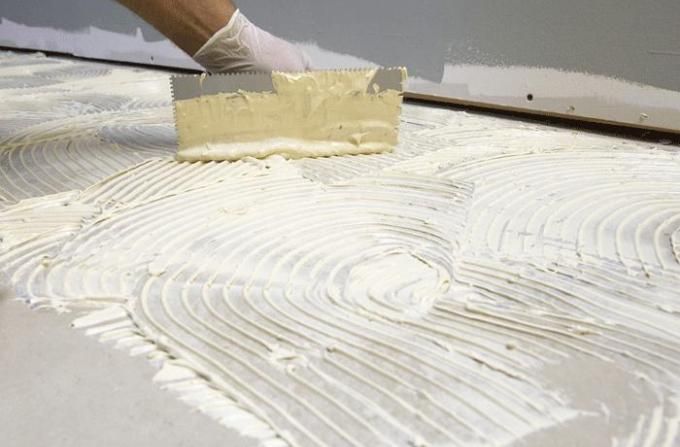
If you really want to save money than the parting speeches of the linoleum manufacturer, then you can seriously reduce the consumption of the recommended adhesive composition. To do this, it is necessary to apply it not in a continuous layer, but pointwise: lines along the contour of the edges and several “spots” inside the perimeter. But again, the trick is not applicable in places with high traffic.


